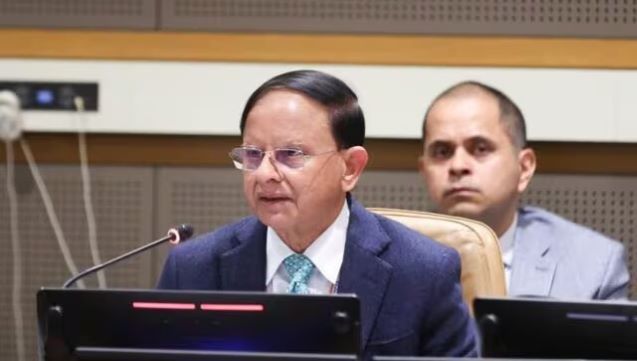India accords high importance to disaster risk reduction issues, said Dr P K Mishra, head of the Indian delegation during the plenary at UN General Assembly Hall on Thursday.
“We have significantly increased funding earmarked for disaster risk reduction. We have brought about landmark changes in our financing architecture to support the entire spectrum of disaster risk management needs – disaster risk mitigation, preparedness, response, recovery and reconstruction,” he said.
“Our state and local governments have access to about $6 billion for disaster risk mitigation over the five years (2021-2025). This is in addition to a resource of $23 billion meant for preparedness, response and recovery,” he added.
Talking about steps taken by the country to reduce the number of casualties due to cyclones, he said that in just over a decade, India has been able to reduce the loss of lives from cyclones to less than 2 per cent.
“We are now developing ambitious mitigation programmes to reduce the risk of losses from all hazards – landslides, glacial lake outburst floods, earthquakes, forest fire, heat waves and lightning,” he said.
“We are working assiduously to improve access to early warning. We are implementing Common Alerting Protocol, which will integrate Alert Generating Agencies with Disaster Managers and Telecom Service Providers. This will ensure the dissemination of geo-targeted alerts in regional languages to reach, each one of the 1.3 billion citizens of our country. We applaud the UN Secretary General’s initiative on ‘Early Warning for All by 2027’. Our efforts will contribute to achieving the target set by this timely global initiative,” he added.
Under India’s presidency, G20 members have agreed to establish a working group on disaster risk reduction. The five priorities identified by the G20 Working Group – early warning for all, resilient infrastructure, improved financing of DRR, systems and capacities for response and ‘build back better’, and eco-system-based approaches to DRR – will provide added impetus to the achievement of Sendai targets globally.
In addition, the ‘Coalition for Disaster Resilient Infrastructure’, presently co-led by India and the United States is bringing about transformation in the way we plan, design, build, and maintain infrastructure systems in the 21st century.
“We stand ready to join efforts to reduce disaster risks at home as well as everywhere on the planet in the spirit of the SDGs: “leave no one behind, leave no place behind and leave no ecosystem behind,” he added.__firstpost.com





